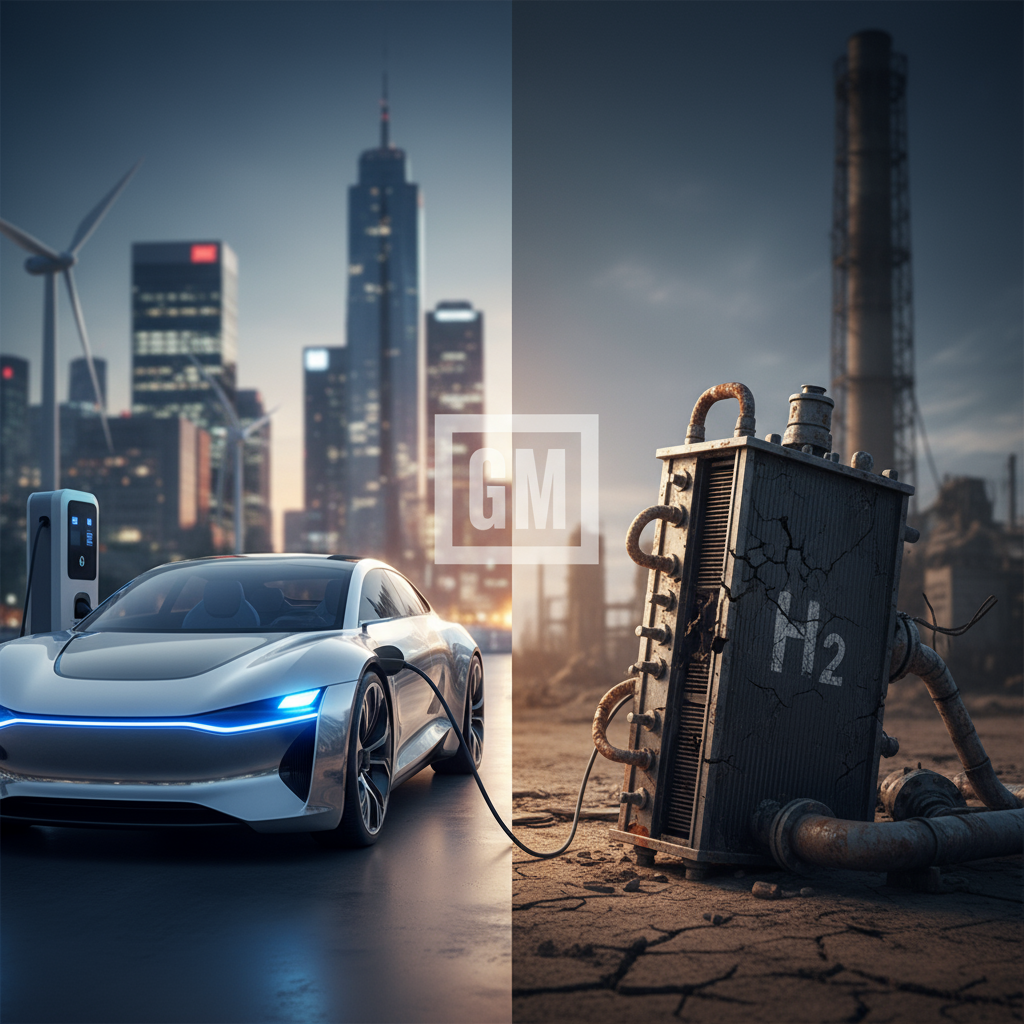The Electric Divide: GM Pumps the Brakes on Hydrogen Fuel Cell Development
In a move that has sent ripples across the automotive and energy sectors, General Motors recently announced a significant shift in its research and development strategy. The industrial giant declared it would cease its HYDROTEC brand’s work on next-generation hydrogen fuel cell development, instead opting to double down on batteries, charging technologies, and electric vehicles (EVs). This decision marks a pivotal moment in the ongoing debate about the future of green transportation, prompting questions about the viability of hydrogen as a primary energy source for passenger vehicles.
While the news might seem like a definitive end for GM’s hydrogen aspirations, it’s a more nuanced story than a complete abandonment. The company stated it would maintain its Fuel Cell System Manufacturing joint venture with Honda, focusing on creating fuel cells for applications like data centers and other niche uses. This strategic pivot reveals a clear preference for battery electric solutions in the consumer vehicle market, but also acknowledges the potential of hydrogen in specialized industrial contexts.
The Allure of Hydrogen: A Promising Past
For decades, hydrogen fuel cells held a tantalizing promise. Envision a world where cars emit only water vapor, refuel in minutes like gasoline vehicles, and offer extended range without the weighty battery packs. This vision fueled significant investment and research, positioning hydrogen as a strong contender in the race for sustainable transportation.
Hydrogen, the most abundant element in the universe, offers unparalleled energy density by weight, making it an attractive option for heavy-duty applications where battery weight and charging times are significant hurdles. Proponents championed its quick refueling times, offering a familiar experience to gasoline car owners, and the potential for a truly zero-emission tailpipe. These benefits, coupled with government incentives and environmental pressures, led many to believe that hydrogen would eventually dominate the automotive landscape.
The Battery Bonanza: Why EVs Are Winning the Passenger Car Race
Despite hydrogen’s appealing characteristics, the past decade has seen battery electric vehicles surge ahead, particularly in the consumer market. GM’s latest announcement underscores this trend, reflecting a growing industry consensus that EVs are the most practical and scalable solution for passenger cars.
Several factors have contributed to the EV’s ascendancy. Advances in battery technology have dramatically increased energy density, reduced costs, and improved charging speeds. The establishment of a rapidly expanding charging infrastructure, though still with room for growth, provides a tangible network for EV owners. Furthermore, the manufacturing complexity of fuel cells and the challenges of producing and distributing “green” hydrogen economically have proven to be significant roadblocks.
- Infrastructure Challenges: Building a widespread hydrogen fueling network is an immense undertaking, requiring significant capital investment and complex logistical solutions. Currently, hydrogen stations are few and far between, especially compared to the burgeoning EV charging network.
- Efficiency and “Well-to-Wheel”: While fuel cell vehicles emit only water from the tailpipe, the overall energy efficiency from the source of electricity to the wheels is often lower for hydrogen than for direct battery electric charging. Producing hydrogen, compressing it, and then converting it back to electricity in a fuel cell involves energy losses at multiple stages.
- Cost and Scalability: The cost of fuel cell systems remains high, hindering mass-market adoption. Battery technology, on the other hand, has seen continuous price reductions due to economies of scale and innovation.
The Road Ahead: Hybrid Approaches and Niche Applications
GM’s decision to continue its joint venture with Honda for non-automotive applications highlights a crucial point: hydrogen isn’t disappearing overnight. While its role in passenger cars might be diminishing, its potential in other sectors remains strong. Fuel cells are proving incredibly valuable for stationary power generation, such as powering data centers, where consistent, reliable, and emission-free electricity is paramount.
Moreover, the heavy-duty trucking, marine, and aviation industries are still actively exploring hydrogen as a viable option. In these contexts, the weight and charging time limitations of batteries become more pronounced, giving hydrogen a compelling advantage. The development of advanced fuel cell technology for these segments will likely continue, driven by the unique demands of these industries.
This strategic shift by GM doesn’t necessarily signal the death of hydrogen as an energy source. Instead, it suggests a more pragmatic and diversified approach to sustainable energy. We may see a future where batteries power our commutes, while hydrogen fuels the giants of industry and keeps our digital world running.
Conclusion: A Focused Future for GM
GM’s decision to wind down its next-generation hydrogen fuel cell development for passenger vehicles is a clear indicator of its strategic priorities. By streamlining its R&D efforts and focusing on battery technology, charging infrastructure, and electric vehicles, GM aims to accelerate its transition to an all-electric future for consumers. This move, while perhaps disappointing to hydrogen proponents, reflects a pragmatic response to market realities, technological advancements, and economic viability.
The automotive industry is in a constant state of evolution, and yesterday’s promising technology can quickly be overtaken by new innovations. GM’s pivot is not just about abandoning one path but about doubling down on another, aiming to solidify its position as a leader in the rapidly expanding EV market. The future, it seems, is undeniably electric, with hydrogen set to play a more specialized, yet still vital, role in the broader energy transition.
